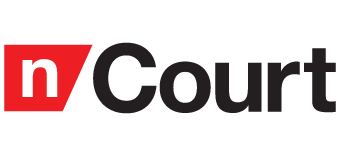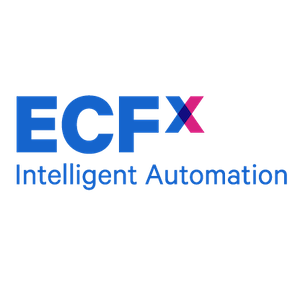Top E Filing Softwares
E Filing software revolutionizes document management by facilitating seamless electronic submission of legal, financial, and tax documents. This eliminates the need for physical paperwork, enabling businesses and individuals to file documents quickly and efficiently. These tools streamline the filing process, reduce errors, and enhance security by storing data digitally. Users can access their fil... Read More
13 companies found
Product Description
Catalis software is designed to help businesses simplify their operations and enhance efficiency through a user-friendly platform. Whether you're managing a small team or a large enterprise, Catalis offers a variety of tools to streamline your daily tasks. From project management to customer support, the software provides various features tailored to different business needs. One of the main stre... Read More
Users
- • No Data
Industries
- • No Data
Market Segment
- • No Data
Product Description
FileTime is a flexible software solution designed to streamline and simplify document management and sharing for businesses of all sizes. Whether you're dealing with everyday paperwork or important contracts, FileTime provides a user-friendly platform to help keep everything organized and accessible. One of the main benefits of FileTime is its cloud-based system, which means you can access your ... Read More
Users
- • No Data
Industries
- • No Data
Market Segment
- • No Data
Product Description
One Legal is designed to make life easier for legal professionals by streamlining the process of filing and serving documents. If you work in a busy law office, you know how time-consuming and error-prone handling court filings can be. One Legal steps in to help by offering an all-in-one solution that simplifies these tasks. The software allows users to electronically file documents with the cour... Read More
Users
- • No Data
Industries
- • No Data
Market Segment
- • No Data
CourtFileNow
Product Description
CourtFileNow is a streamlined software solution designed to assist law firms and legal professionals with managing their court filings efficiently. This cloud-based platform simplifies the process of preparing, filing, and tracking legal documents, helping you stay organized and compliant with court requirements. With CourtFileNow, you can submit court documents directly from your computer, ensuri... Read More
Users
- • No Data
Industries
- • No Data
Market Segment
- • No Data
Product Description
InfoTrack is a software service made to simplify the complex tasks involved in legal investigations and document filings. Designed for lawyers and legal professionals, it helps manage services like searching and filing court documents, conducting property searches, and verifying identities. This tool saves not only time but also reduces the potential for errors that can occur with manual processes... Read More
Users
- • No Data
Industries
- • No Data
Market Segment
- • No Data
ECFX Notice
Product Description
ECFX Notice is a streamlined, user-friendly software solution designed to simplify the way law firms manage their court notifications. If your team is tired of manually tracking and processing these notices, ECFX Notice could be the right fit for you. It automates the entire process from receiving court emails to updating internal case management systems, cutting down on administrative tasks and r... Read More
Users
- • No Data
Industries
- • No Data
Market Segment
- • No Data
Aderant eFiling Portal
Product Description
Aderant eFiling Portal is a software solution designed to make the legal filing process simpler and more efficient for law firms and legal professionals. By using this portal, these professionals can submit court documents electronically, helping to reduce paperwork, save time, and improve accuracy in the filing process. The intuitive interface ensures that even those who may not be tech-savvy c... Read More
Users
- • No Data
Industries
- • No Data
Market Segment
- • No Data
Courts & Justice
Product Description
Courts & Justice software is designed to simplify the complexities of managing legal processes for courts and justice systems. It provides a modern approach to handling case management, scheduling, and documentation, making it easier for legal professionals to stay organized and efficient. This software aims to enhance the daily workflow of courts, helping judges, clerks, and attorneys to manage t... Read More
Users
- • No Data
Industries
- • No Data
Market Segment
- • No Data
Product Description
1eFile is a reliable and practical document management software designed for businesses looking to streamline their file organization and collaboration. If you're tired of hunting through countless folders trying to find the right document, or if you need an easier way to share and work on files with your team, 1eFile has got you covered. The software makes it straightforward to store, manage, an... Read More
Users
- • No Data
Industries
- • No Data
Market Segment
- • No Data
Product Description
Doxpop is a user-friendly software designed to make managing public records simple and efficient. Created with everyday users in mind, Doxpop offers quick and easy access to a variety of public documents, including court records, land records, and other essential legal paperwork. Whether you're a legal professional, a property manager, or someone just needing occasional access to public records, D... Read More
Users
- • No Data
Industries
- • No Data
Market Segment
- • No Data
What is E Filing software used for?
Definition
E Filing software refers to digital tools that facilitate the electronic submission of documents, forms, or returns to relevant authorities. It streamlines the process of filing by providing platforms that ensure accuracy, efficiency, and compliance.
Purpose
The main purpose of E Filing software is to transition paper-intensive filing processes into a digital format. This eliminates the challenges and potential errors associated with manual filing. It assists individuals and organizations in submitting documents electronically, which can include legal, financial, and governmental forms.
Efficiency and Accuracy
E Filing software enhances both efficiency and accuracy in document submission. By automating various steps such as data entry validation and error checking, the software reduces the likelihood of human error. It also speeds up the filing process by eliminating the need for physical copies and mailing.
Compliance and Security
Compliance with legal and regulatory standards is crucial in any filing process. E Filing software often includes features that ensure submissions meet required regulations. Security measures, such as encryption, also protect sensitive data during the electronic filing process, ensuring that information remains secure throughout transmission and storage.
Document Management
E Filing software aids in the organization and retention of documents. This tool enables users to store, access, and manage filings efficiently. Document management features often include categorization, tagging, and versioning, which make retrieval easier and more reliable.
Accessibility
Another significant aspect of E Filing software is accessibility. Users can access the platform from anywhere with an internet connection, providing flexibility. This is particularly beneficial to businesses operating across different regions or remote teams.
Time and Cost Savings
One of the most notable advantages of E Filing software is its ability to save time and reduce costs. By minimizing manual tasks and reducing dependency on physical paperwork, organizations can cut down on administrative expenses and allocate resources more strategically.
User-Friendliness
E Filing software is designed to be user-friendly, often incorporating intuitive interfaces and step-by-step guidance. This makes it easy for users of varying skill levels to navigate the software and complete filings without extensive training.
Tracking and Notifications
Tracking and notification features are often integral to E Filing software. Users receive updates and confirmations regarding the status of filed documents, helping them keep track of submissions and deadlines. Notifications alert users to any issues or required actions, reducing the risk of missed deadlines or incomplete filings.
Integration
Most E Filing software allows integration with other business applications and systems. This seamless compatibility ensures that data flows smoothly between different platforms, enhancing the overall efficiency of organizational processes.
Sustainability
By reducing the reliance on paper, E Filing software contributes to environmental sustainability. The digital approach minimizes waste and conserves resources, aligning with the growing emphasis on eco-friendly organizational practices.
How does E Filing software improve efficiency?
Streamlined Document Handling
E Filing software significantly improves efficiency by automating document handling. Rather than sorting through physical papers, users can manage files digitally. The software allows for the electronic submission of forms and documents, reducing the need for manual data entry. This digitization minimizes the risk of errors that arise from manual input, enhancing accuracy and speed.
Time Savings
Time efficiency stands as one of the primary benefits of E Filing software. By automating repetitive tasks, users save a significant amount of time. Processes that once took hours can now be completed in minutes. The elimination of mail delays associated with traditional filing further speeds up workflows, ensuring that deadlines are consistently met.
Enhanced Accuracy
The built-in validation features of E Filing software ensure that all required fields are completed correctly before submission. This automation reduces human error, ensuring greater accuracy in submitted documents. Accurate filings lead to fewer rejections or requests for corrections, saving time and resources for organizations.
Cost Reduction
E Filing software reduces costs associated with physical filing processes. The need for printing, mailing, and storing paper documents is diminished, leading to lower office supply expenses. Organizations benefit from reduced dependency on physical space and personnel dedicated to managing paper files, further decreasing operational costs.
Increased Accessibility
With E Filing software, users can access documents from any location via internet-enabled devices. The software's centralized access to files allows teams to collaborate easily, regardless of their physical location. This increased accessibility supports remote work environments, providing further efficiency enhancements.
Improved Security
Security is critical in document management. E Filing software provides enhanced security measures such as encryption, password protection, and access controls. These measures help protect sensitive information, reducing the risk of data breaches. Secure document handling prevents inefficiencies related to the loss or mishandling of critical data.
Streamlined Communication
E Filing software facilitates effective communication through integrated notification systems. Users receive alerts about important deadlines and updates, promoting timely actions and decision-making. This feature ensures cohesive communication within organizations, reducing lapses or delays in document processing.
Automated Record-Keeping
Automated record-keeping within E Filing software allows for easy retrieval and review of past submissions. This feature provides an organized digital trail of activity, which is invaluable for audits, reporting, and future reference. Systematic record management eliminates the hassle of manual archiving and retrieval, freeing up time for more productive tasks.
Scalability
E Filing software offers scalable solutions that adapt to the growing needs of businesses. As organizations expand, the software can handle increased volumes of documents without compromising on efficiency. This scalability ensures sustained productivity and a seamless transition during growth phases.
Environmental Impact
The shift from paper-based to electronic filing systems results in a positive environmental impact. Reducing paper usage aligns with sustainable practices, lowering an organization's carbon footprint. A more efficient filing system not only supports business objectives but also fosters environmentally responsible behaviors.
What features should you look for in E Filing software?
When considering E Filing software, selecting the right features can streamline operations and improve efficiency. Here are key features to look for:
User-Friendly Interface
A simple and intuitive user interface is essential in E Filing software. It should allow users to navigate through different sections quickly, reducing the time spent on learning the software.
Compliance & Updates
Ensure the software is always compliant with the latest regulations. Good E Filing software will provide timely updates reflecting any changes in laws and guidelines, allowing your filing process to remain in compliance.
Security Features
Security is critical in E Filing software to protect sensitive information. Look for features like encryption, secure login, and regular security patches. This ensures that all data is safeguarded against unauthorized access.
Document Management
Efficient document management capabilities are essential, allowing users to store, organize, and retrieve documents easily. The software should provide tagging, categorization, and a robust search function to facilitate effective document handling.
Integration Capabilities
The ability to integrate with other software systems is crucial. E Filing software should seamlessly connect with existing accounting, CRM, and other business systems to streamline workflows and reduce data entry duplication.
Electronic Signature
An integrated electronic signature feature is valuable for authenticating documents quickly and efficiently. This allows users to obtain necessary approvals without the need for physical presence, speeding up the overall process.
Real-Time Tracking
E Filing software should offer real-time tracking capabilities, providing users with updates on the status of their filings. This feature allows users to monitor progress, ensuring that they remain informed throughout the process.
Automation Features
Automation can enhance productivity by reducing manual tasks. Look for E Filing software that can automate repetitive processes like reminders, notifications, and data population, thus minimizing errors and saving time.
Multi-Platform Accessibility
Ensure the software is accessible on various platforms, including web and mobile. This feature allows users to manage their filings from anywhere, providing flexibility and convenience.
Customer Support
Competent customer support is crucial. The software should have accessible support options such as chat, email, or phone assistance, ensuring users can resolve issues promptly and efficiently.
Cost Management and Invoicing
Look for features that provide detailed cost analysis and invoicing. E Filing software should help users in managing the costs associated with each filing, offering insights to optimize spending.
Customization Options
The software should allow customization to fit specific business needs. It should provide the ability to tailor interfaces, reports, and processes, ensuring it suits different organizational requirements.
Data Backup and Recovery
Robust data backup and recovery features prevent data loss. E Filing software should routinely back up information and allow easy restoration of data if needed, ensuring business continuity.
Reporting and Analytics
Detailed reporting and analytics provide insights into the filing processes. E Filing software should offer various reports, helping users to analyze time frames, detect issues, and optimize processes effectively.
By focusing on these essential features, you can choose E Filing software that meets your organizational needs, streamlining your filing processes and ensuring compliance and efficiency.
Is E Filing Software Secure for Sensitive Documents?
E Filing software is increasingly used for dealing with sensitive documents in various sectors, such as legal, government, and accounting. The importance of security in these applications is paramount, given the nature of the documents handled.
Security Protocols
E Filing software typically employs high-level security measures to protect sensitive information. Encryption is the backbone of these systems, converting data into unreadable codes during transmission. Only authorized parties with the correct decryption keys can access the original data, ensuring that sensitive documents remain protected even if intercepted.
Access Control
Access control is crucial for maintaining the confidentiality of documents. E Filing software often includes role-based access controls, which ensure that only authorized users can access specific documents. By defining user roles, organizations can limit document access to essential personnel, reducing potential security breaches.
Audit Trails
Audit trails are another key security feature of E Filing software. These track all activities related to document handling—such as creation, modification, access, or deletion—within the software. Audit trails help organizations monitor user behavior and can be crucial in identifying unauthorized access attempts or other suspicious activities.
Data Integrity
Data integrity measures ensure that documents remain unchanged and authentic during storage and transmission. E Filing software often includes checksums or hash functions. These verify that a document's content has not been altered or corrupted. If a document does not match the expected checksum, it indicates possible tampering.
Compliance with Regulations
Many E Filing software solutions comply with industry regulations like HIPAA, GDPR, or SOC 2, which cover data protection standards. These regulations require the software to implement specific security measures to protect sensitive information, and compliance indicates a level of trustworthiness in handling sensitive documents.
Secure Data Storage
E Filing software generally provides secure data storage solutions, often maintaining offsite, encrypted backups as a precaution against data loss or system failures. This safeguard ensures that sensitive documents are recoverable and protected from unauthorized access even if the primary data storage is compromised.
Multi-Factor Authentication
To prevent unauthorized access, E Filing software commonly incorporates multi-factor authentication. This method requires users to verify their identity through multiple means—such as a password and a physical token or a biometric scan—before gaining access to the system, thus providing an additional layer of security.
Overall, E Filing software combines various security measures to protect sensitive documents effectively. These include encryption, access controls, audit trails, compliance with regulations, secure data storage, and more, contributing to the overall robustness of the software in safeguarding information. Such systems are designed to offer businesses a reliable way to manage and transmit sensitive data while minimizing the risk of breaches or unauthorized access, aligning with the essential security standards required for handling sensitive documents.
How can E Filing software reduce business costs?
Streamlined Document Management
E Filing software offers digital storage solutions, which eliminate the need for physical document storage. By reducing paper use, businesses can cut down the costs associated with printing, filing cabinets, and storage spaces. This digital shift minimizes the physical space required, leading to savings in office rent and maintenance.
Reduced Administrative Workload
E Filing software automates many administrative tasks associated with document filing and management. Automation reduces the need for manual data entry and document handling, freeing up employees to focus on more valuable tasks. As a result, businesses can reduce labor costs associated with administration, which constitutes a significant portion of overall expenses.
Minimization of Errors
Manual filing is prone to human errors, which can lead to costly mistakes such as incorrect data entries, lost documents, or compliance failures. E Filing software enhances accuracy through automated processes and validation checks, significantly reducing error rates. Fewer errors lead to decreased costs related to corrections, rework, and potential regulatory fines.
Faster Processing Times
E Filing software accelerates the speed of processing documents by automating workflows and streamlining approvals. Faster processing means businesses can react quickly to opportunities and threats, enhancing overall efficiency. By reducing the time spent on administrative tasks, companies can reduce the costs associated with prolonged document processing.
Compliance and Risk Management
Using E Filing software ensures that businesses remain compliant with regulatory requirements by providing timely updates and secure document handling. Enhanced compliance reduces risks associated with legal penalties, audits, and reputational damage, which might otherwise incur significant costs. This proactive approach to compliance management can prevent costly litigations and settlements.
Improved Accessibility and Collaboration
With E Filing software, documents are accessible from anywhere, allowing teams to collaborate more efficiently. This ease of access reduces time and costs related to searching for documents, organizing meetings, or coordinating between teams. The ability to collaborate remotely also reduces travel expenses and supports a more flexible work environment.
Cost-Effective Scalability
As businesses grow, the volume of documents increases. E Filing software provides scalability with minimal additional costs compared to traditional filing systems. Modern E Filing solutions can expand their capacity with ease, ensuring businesses only invest in what they need when they need it, avoiding unnecessary upfront costs.
Enhanced Security
E Filing software typically includes robust security protocols to protect sensitive information, reducing the risk of data breaches. Security breaches can be cost-prohibitive due to legal, operational, and reputational losses. By securing data, E Filing saves businesses from potential theft-related costs and ensures customer trust.
Reduction in Shipping and Courier Costs
Traditional filing may require the physical transfer of documents between departments or external entities. E Filing software allows for digital transfer, eliminating shipping and courier fees. This digital transformation cuts down on logistics expenses directly, contributing to cost savings for the business.
In summary, E Filing software can significantly reduce business costs by automating processes, enhancing accuracy, and improving efficiency. By leveraging these technologies, businesses can streamline operations and allocate resources more effectively.
Can E Filing software integrate with other systems?
E Filing software is designed to help users manage submissions of electronic documents to various authorities. Integration capabilities are crucial for E Filing software, enabling seamless data flow between systems, reducing manual data entry, and minimizing errors. Here is how E Filing software typically integrates with other systems:
Tax Software Integration
E Filing software often connects with tax preparation software. This integration allows users to import relevant tax data directly into the E Filing software. By linking these systems, the workflow becomes streamlined, making it easier to generate and submit filings.
Accounting and Financial Systems
Many E Filing solutions integrate with accounting and financial systems. Such integrations ensure consistent records and quicker data transfer. This enables businesses to keep financial data up-to-date without redundant input, improving both accuracy and efficiency.
Customer Relationship Management (CRM)
Integrating E Filing software with CRM platforms helps manage client data more effectively. Such connections enable automatic updates of client information, ensuring filings are accurate and reflect current statuses.
Document Management Systems
By integrating with document management systems, E Filing software can efficiently manage and organize paperwork. This integration facilitates the automatic import and export of documents, simplifying document handling and storage.
Legal Management Software
Legal professionals benefit from integrations with legal management software. This allows for better case tracking and management, keeping all relevant legal documentation up-to-date and easily accessible. Integration supports the automatic submission of legal documents without the need for manual uploads.
Email and Communication Tools
Many E Filing software platforms integrate with email and communication tools. This enables quick sharing of filing statuses and documents with involved parties. Notifications and alerts can also be automated, improving communication efficiency.
Cloud Storage Services
Cloud storage integration is common in E Filing software. This allows users to back up and store documents securely. Accessing and retrieving these documents becomes simpler and faster, enhancing collaboration across teams.
Enterprise Resource Planning (ERP)
ERP system integration allows for a unified approach to handling business processes. It supports the automatic transfer of data between E Filing software and ERP systems, optimizing business operations without duplication of effort.
Payment Gateways
This type of integration facilitates seamless payment processing for services related to filings. It ensures transactions are secure and quick, streamlining the fee payment process involved in submissions.
Overall, the ability of E Filing software to integrate with various systems is crucial for enhancing operational efficiency, data accuracy, and user convenience. This integration promotes a cohesive environment where different software solutions work in harmony, ultimately supporting the core operations involved in electronic filing.
What industries benefit most from E Filing software?
E Filing software is an innovative solution that helps various industries streamline their document submission processes. The electronic filing mechanism enhances efficiency, reduces manual errors, and ensures compliance with regulatory standards. Numerous industries benefit significantly from implementing this technology. Below are several key sectors that gain substantial advantages:
Legal Industry
The legal industry extensively uses E Filing software to manage court documents. By digitizing the filing process, legal professionals can submit briefs, motions, and other legal documents electronically. This reduces paper usage, speeds up submissions, and provides quick access to case files. Judges, attorneys, and court clerks all benefit from improved workflows and reduced administrative burdens.
Tax and Accounting Industry
Tax and accounting professionals heavily rely on E Filing software to manage and submit tax returns and financial statements. This software simplifies the filing process, ensuring compliance with tax regulations while minimizing error rates. Digital filing makes tax preparation more efficient and secure, offering timely submissions and transparent records for audits and reviews.
Government and Public Sector
Government agencies are increasingly adopting E Filing software to improve public service efficiency. This software aids in digitizing various forms, permits, and licenses, making it easier for citizens and businesses to comply with regulations. It reduces paperwork, decreases processing times, and improves data management, offering quicker resolutions and better service to the public.
Healthcare Industry
The healthcare sector benefits from E Filing software by streamlining the process of managing medical records and submitting claims electronically. This improves patient care by reducing delays in processing insurance claims and enhances the security and accessibility of patient information. Healthcare providers and insurers can significantly reduce paperwork while improving data accuracy and coordination.
Financial Services Industry
Financial institutions utilize E Filing software to handle applications, loan processing, and regulatory compliance submissions. This software accelerates approval processes and ensures adherence to financial regulations. By digitizing document management, banks and financial entities can effectively manage risk and maintain comprehensive records of client interactions and transactions.
Education Sector
The education sector benefits from E Filing software by optimizing administrative processes such as student admissions, financial aid applications, and faculty records management. Educational institutions can streamline operations, enhance data accuracy, and improve communication between students, faculty, and administrative staff. This efficiency boosts service delivery and resource allocation across schools and universities.
Real Estate Industry
In the real estate sector, E Filing software simplifies the submission of property-related documents, such as deeds, mortgage contracts, and leasing agreements. By migrating to electronic processes, real estate agents and firms can expedite transactions, enhance client satisfaction, and ensure compliance with property laws. This leads to quicker closings and more efficient management of property records.
These industries illustrate the broad applicability of E Filing software, highlighting its role in transforming document management and submission processes across diverse sectors. The ability to electronically file and manage documents is a critical advantage in today’s fast-paced and compliance-driven business environment.









